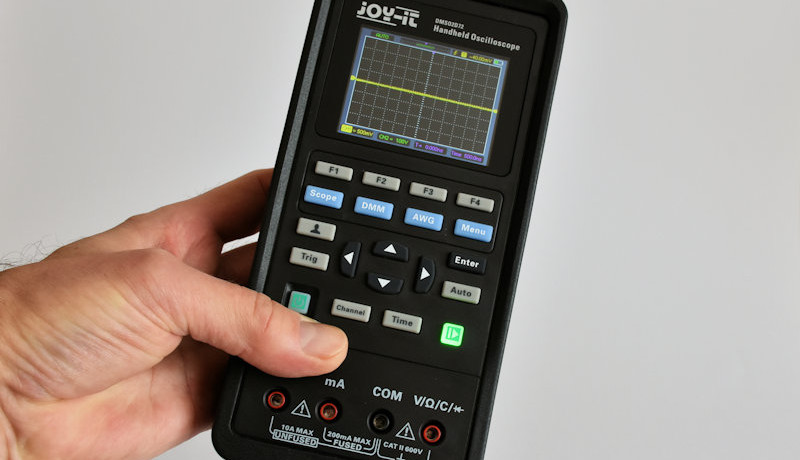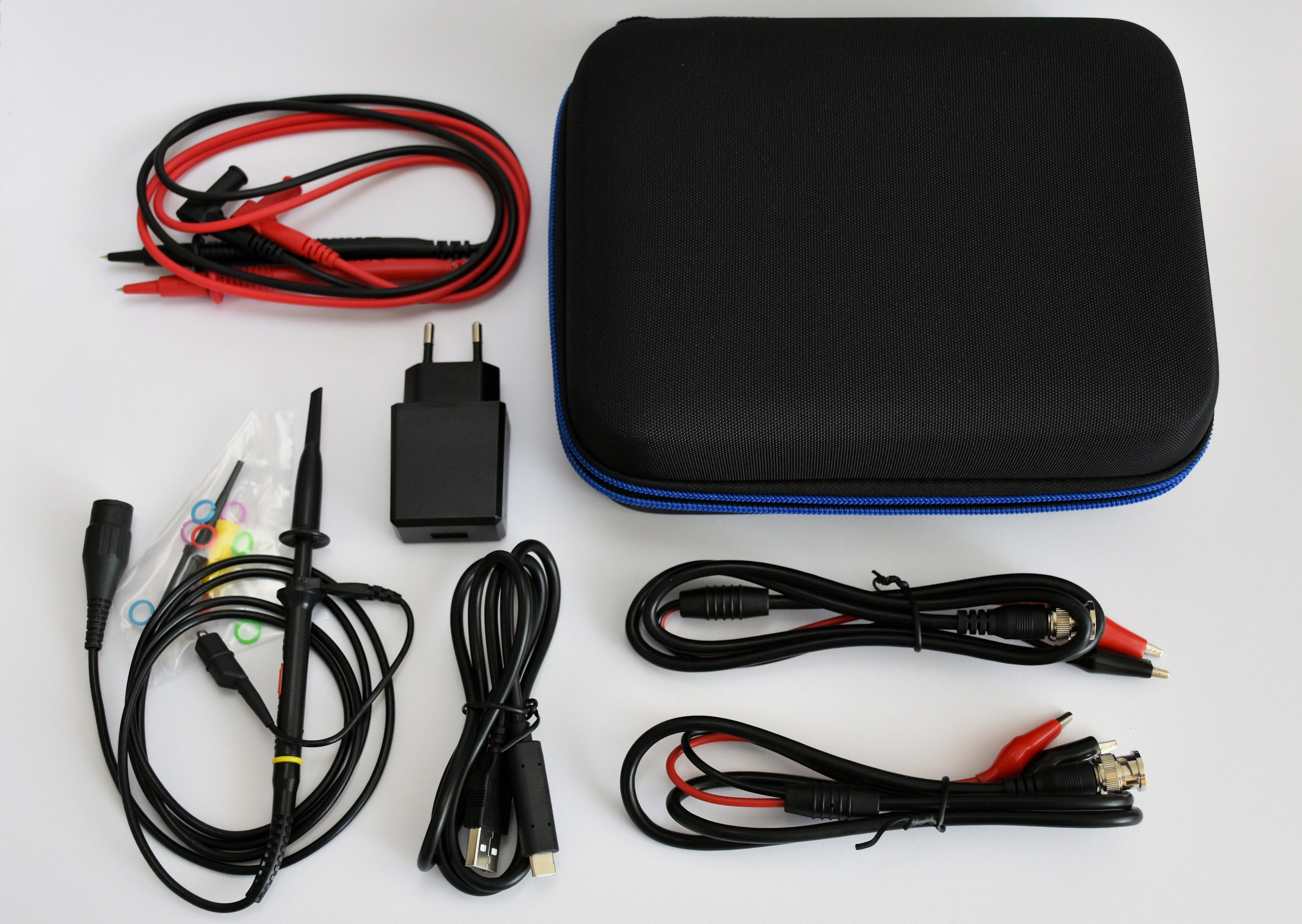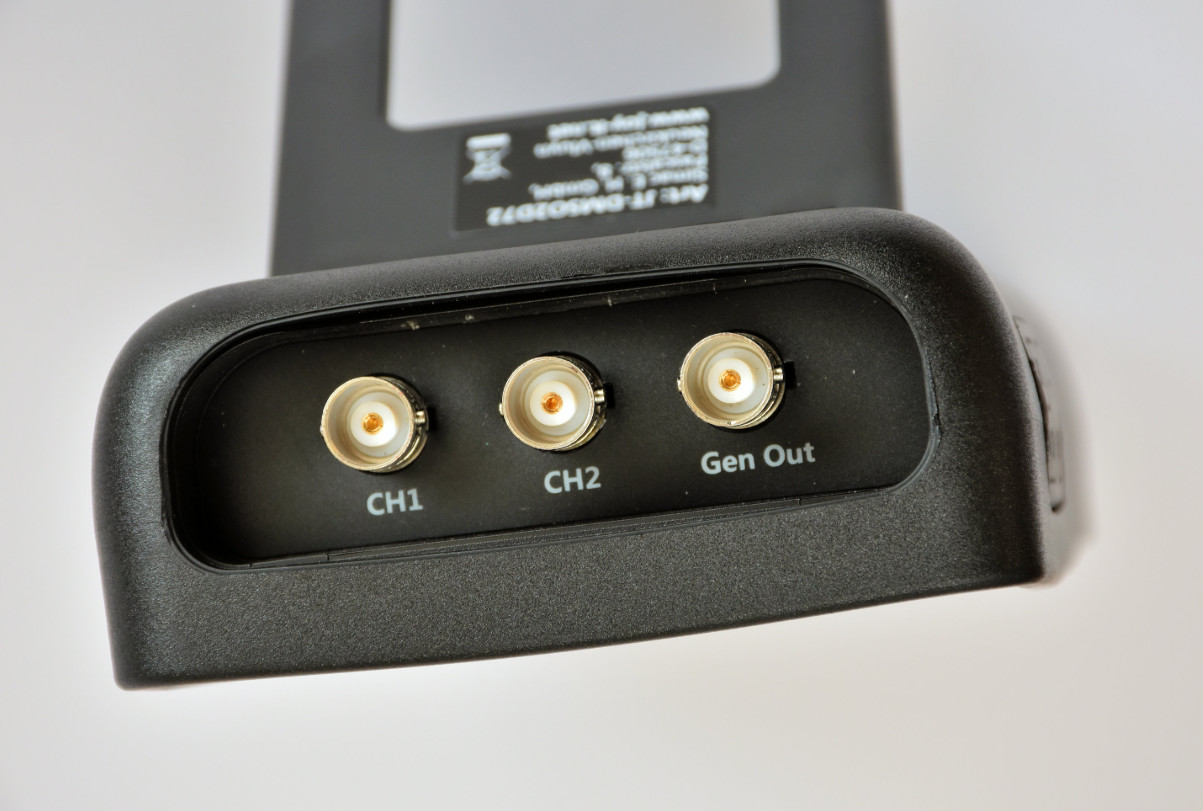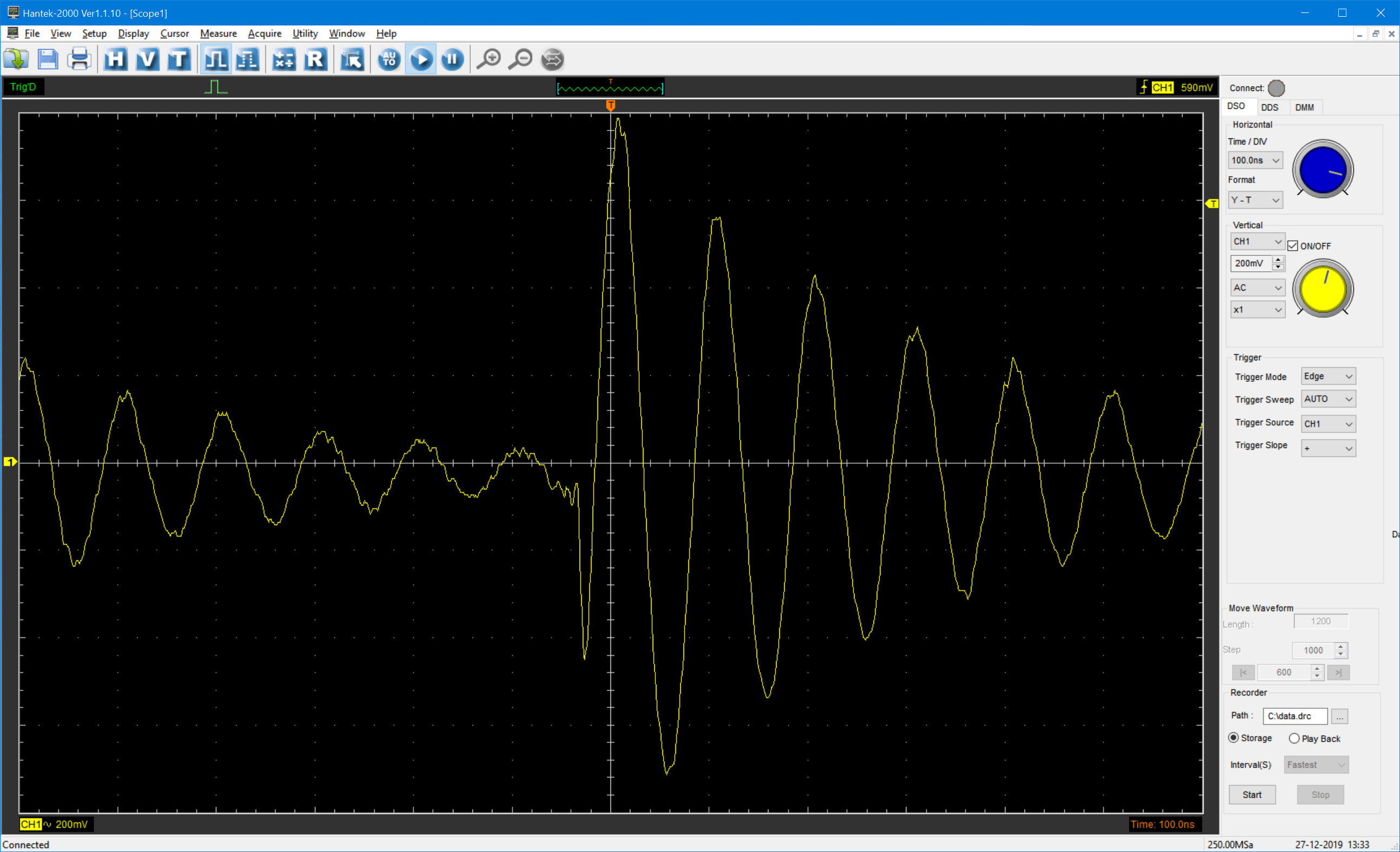Review: JOY-iT DMSO2D72 Portable 3-in-1 Oscilloscope
on

What Is the DMSO2D72?
With so much functionality packed in a single instrument, you will naturally ask yourself what its main function actually is. This is obviously the oscilloscope, in this case a two-channel version with a bandwidth of 70 MHz and a sampling rate of 250 Msamples/s (half that when using the two channels simultaneously). These are very reasonable specs for a measuring instrument that costs just over €230 (for Elektor members). Add to that the AWG (arbitrary wave generator) which also has decent characteristics (sampling rate of 250 Msamples/s) and an autoranging multimeter with its own dedicated inputs. What more do you want?
The DMSO2D72 is supplied with a sturdy case, a power supply adapter and various types of test leads. All these features are housed in a robust enclosure measuring about 20 x 10 x 4 cm. The whole thing resembles a substantial multimeter. The enclosure itself is fitted with a rubber bumper, and on the back is a fold-out stand that allows the meter to be placed upright. On the back there is also the battery compartment that contains two standard 18650 Li-ion cells. These are therefore always easy to replace. A cover on the right side protects a USB-C connector that serves as power supply input and for communication with a PC. On the top are three recessed BNC connectors for the oscilloscope inputs and the AWG output. On the front we find a 2.8-inch display at the top with the operating controls below that and the multimeter inputs right at the bottom. The meter is supplied in a generous case with many accessories.
Oscilloscope
The operation of the DMSO2D72 succeeds largely without having to consult the operating manual first, but some things you will find only after some trial and error. Three of the blue buttons are used to switch between the different functions, the fourth blue button gives access to a menu with various configuration options. Directly below the display are four function buttons, the functions of which are displayed on the screen. The colour display is easy to read and with a resolution of 320 x 240 pixels it shows a lot of information. I believe it should have been a little bigger, but then the instrument would probably also have to be more expense.
The four cursor buttons are used for, among other things, setting the time base, sensitivity, DC level and trigger level. This is initially not all that straightforward because the functions of the buttons changes after pressing the Channel or Time button. Unfortunately I could not find an indication anywhere on the display that showed which of the Channel or Time buttons was pressed last.
The oscilloscope possesses virtually all the functions that an ordinary 'scope has, such as an auto setting that automatically adjusts the settings to obtain a stable scope display, the use of cursor lines and the display of various measurements. The trigger options are somewhat limited, but are sufficient for most practical applications. The 'scope has a data memory of 6 (1 channel) or 3 (2 channels) kSamples, the contents of which is shown at the top of the screen. Once sampling is completed you can use the cursor buttons to scroll through the memory.

AWG and Multimeter
The built-in AWG offers a few standard waveshapes and has four memories for waveforms you can program yourself. The latter is possible using the accompanying PC software. The maximum frequency differs for each waveform. The range for the sinewave goes up to 25 MHz, for the squarewave to 10 MHz and for the triangle only up to 1 MHz, while the range for the arbitrary waveform increases to 5 MHz again.
The frequency can be adjusted with the cursor buttons. After pressing the frequency function button twice, a keyboard appears on the screen that allows you to enter a value. It is possible to use the AWG and scope at the same time. After setting the AWG and activating its output you can switch to the oscilloscope and the AWG continues to be active. This is ideal for testing the signal propagation in a circuit; you apply a signal on the input and subsequently examine the signal in the circuit or at its output. Note that the value of the indicated output voltage is only valid when the output is terminated into 50 Ω, otherwise you will get double that value!
The supply voltage is provided by two standard 18650 Li-ion cells. The multimeter is a nice addition. This meter operates as you would expect from a typical multimeter but the accuracy is not all that high (display 4000 counts, basic accuracy 0.8%). But this is generally not that critical with measurements ‘in the field’.
The automatic range switching works well and the display also indicates which sockets you have to use for which measurement. There are separate inputs for the mA and A ranges. Beware: the 10-A range is not fused! Furthermore, the multimeter also has a resistance meter, diode tester and a continuity tester on board. And finally, you can also measure capacitance.
PC Software
The accompanying PC software is available from the Joy-IT website and can be used to operate the instrument from your computer. The installation went quickly but once running an error message (“read allset failed”) appeared regularly. As a consequence many settings were wrong and some didn't work at all.
Some searching on the Internet revealed that this fault is not unfamiliar: the software is unable to read the characteristics of the connected instrument. This could be solved by installing an older version (1.1.10) of the software, after which everything worked as it should and then changing back to the current version 1.1.11. Unfortunately the data transfer speed in 'scope mode is quite slow, but otherwise the software offers quite a few features; you can program waveshapes and send them to the DMSO2D72.



DMSO2D72: A Convenient Instrument
For less than €250 you get a very handy and sturdy measuring instrument with three functions, meaning practically everything you need for general electronics use. The 'scope and generator features are relatively extensive and the instrument is quite easy to operate once you have become familiar with it. It is not a very accurate measuring instrument, but then you don't expect that for this price and the intended application. The combination of the three measurement functions makes this a very convenient instrument that I would not hesitate to purchase if I had the need for an all-in-one solution.




Discussion (0 comments)